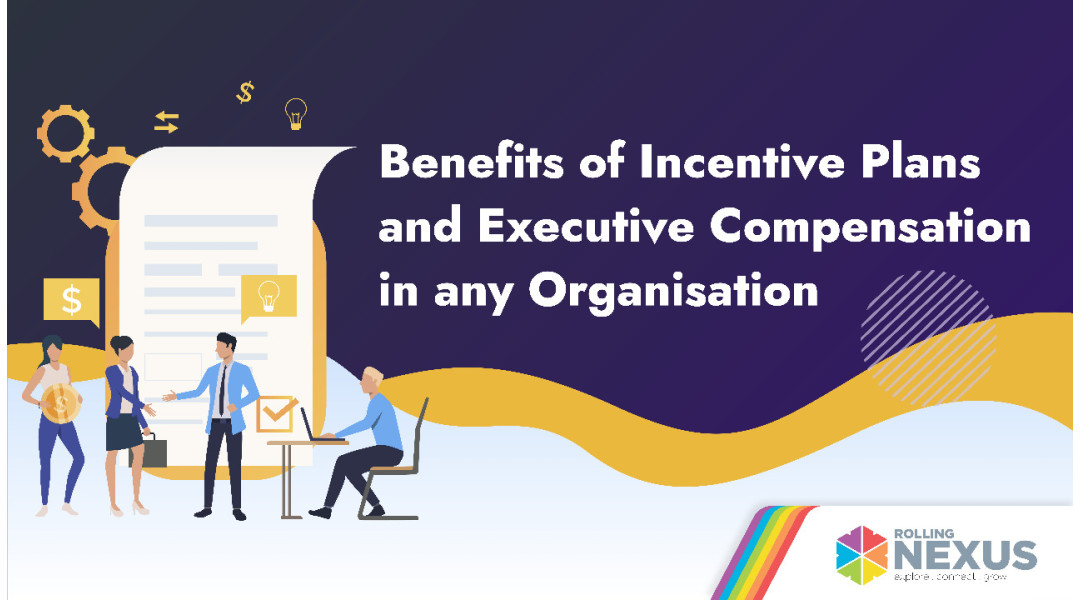

How does the organisation form? The organisation has several hierarchies and the human resources contributing to meeting the organisational goals are aligned in any organisation catenated with several designations or organisational positions. For the contribution of human resources, they are benefited from the constant incentives that we call salary or remuneration. Employee retention gets affected when human resources get insatiable with the incentive options.
But what are the benefits of incentive plans and executive compensation in any organisation? Do they benefit the organisation for optimistic growth and manpower productivity? Do they make the executives stay longer at the organisation fulfilling their responsibilities for a better turnaround in an organisation?
Before diving into the execution of incentive plans and executive compensation in the organisation, let’s hop into the importance of discussing executive pays and incentives:
War for the sustainability of the high-level executives
Retention of talented employees
Maintaining organisation brand due to a better employee-organisation relationship
Attracting highly efficient talent in the organisation
Profitable growth of the organisation
Apart from the extra bonuses referred to as incentives, executive compensation or executive pays are the returns given to the C-suite or executive persona of the organisation combined with salaries, benefits, or bonuses that the organisation provides for compensating the efforts they contribute to the organisation. These compensations may be in the form of financial or non-financial benefits.
Apart from the fixed compensation as salary, these incentive plans and executive compensation methods not only lead the work environment in a positive way but also increase the quality performance of human resources. Incentives and rewards have always motivated employees to give their best efforts and contribute to the best performance in the organisation. Its benefits are illustrated here:
1. The first and foremost reason for implementing these incentive plans and executive compensation is motivation to the top position employees and the existing human resources. These plans ultimately increase motivation among the human resources in the form of bonuses, increasing remits, and rewards which ramp up their quality performance and boost the sales and growth of the company.
2. Financial incentives to the executives refine the executives to deliver the best if these incentives get connected with the company strategy.
3. As company executives have crucial roles in making strategic decisions and company goals along with company operations, they need to be compensated for their expertise and knowledge. Hence, the executive plans work as the motivating factor to deliver extra actions within the organisation. These plans encourage the management with C-suite positions to work like the key stakeholders of the organisations same as the top shareholders of the organisation. Hence, the board must set this plan for meeting the organisational goals in a boosting way.
These executive plans may be divided into financial and non-financial elements.
Financial elements: Salary-a fixed compensation, variable compensation like incentives, bonuses, performance-based annual incentives, additional bonuses, fringe benefits, paid expenses, health insurance, life insurance, etc.
Non-financial perks: Different kinds of paid time off (PTO), sick days leave, bereavement days, stock options, performance shares to the top executives if met the targets of organisational success, ESOs, special rights and privileges in company matters.
Before deciding upon the giving of these benefits to the top management, the components for these strategies must be defined such as:
Which personalities are involved in these plans? Is it for the top management? Is it up to the supervisor level?
How much compensation is required to provide as these pays are vital parts of the company budget and strategy?
When will such pay be given to the destined personnel?
What is the structuring of these rewarding benefits?
How can these plans get aligned with the specific business goals and strategy?
Executives are skilled persona with years of leadership, expertise, and knowledge. These professionals have plenty of valuable learnings and the organisation must work on sustaining these valuable human resources in the organisation. The company can provide these incentives for various time frames too. The compensation mix should be driven by company size, culture, and risk appetite too. Based on competitors’ decisions, the company shouldn’t do exactly the same but for such programs, the company should determine if the company can provide such pay or not. For avoiding devastating effects such as loss of key potentials, demotivation, misaligned company goals, and famished shareholder returns, a company must design these plans based on the existing company budget and the business strategy for profitable growth and productivity of the company.
Company success and career advancements of the manpower get together when the company motivates the human resources and the existing human resources deliver their best efforts for the meeting of company goals. Hence, the executive compensation structure should be aligned with the specific goals and strategies for longer employee retention and successful business operation in any organisation.